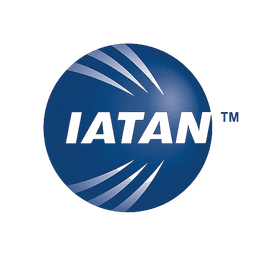


Nestled between the Caribbean Sea and the Pacific Ocean, Panama's history is a captivating tale of indigenous cultures, colonial conquests, and modern innovation. From its early roots as a crossroads of trade to its pivotal role in global transportation, Panama's history is a reflection of its unique location between continents and cultures.
Indigenous roots run deep
Long before the arrival of European explorers, Panama was inhabited by indigenous groups such as the Kuna, Emberá, and Ngäbe-Buglé. These communities thrived in the region's varied ecosystems, adapting to both the coastal and mountainous environments. They established trade networks, developed agricultural practices, and left behind traces of their cultures in the form of pottery, tools, and ceremonial artifacts.
The Museo Reina Torres de Araúz in Panama City, focuses on Panamanian folk art, including indigenous art and artifacts. The museum's exhibits provide insights into the cultural diversity of Panama, showcasing the traditions, rituals, and artistic expressions of its many indigenous communities.
¡Conquistadores!
In 1501, Spanish explorer Rodrigo de Bastidas became one of the first Europeans to set foot on Panamanian soil. But it was Vasco Núñez de Balboa who truly put Panama on the map. In 1513, he embarked on a perilous journey through dense jungles and steep mountains, becoming the first European to witness the Pacific Ocean from the American mainland. This discovery paved the way for Panama to become a key hub for shipping and trade, as the isthmus (it’s only 30 miles wide at its narrowest point) offered a shortcut for transporting goods between the two oceans.
For the next few centuries, Panama was a Spanish colony, with Panama City becoming a critical center for trade and commerce. The infamous Camino Real, or Royal Road, was established to transport riches from South America to the Caribbean coast, where they were then shipped to Spain. However, this lucrative trade route made Panama a target for pirates and buccaneers, leading to the construction of fortifications to defend against these marauders.
Section Type: standardWidthImageS
Fort San Lorenzo at the west bank of the modern Panama Canal in Colón.

Located at the entrance of the Chagres River on the Caribbean coast, the San Lorenzo Fort (Castillo de San Lorenzo) is a UNESCO World Heritage site and one of Panama's most significant colonial fortifications. Built in the 16th century, it was designed to defend the Chagres River and the approach to the Panama City from pirate attacks. The fort offers stunning views of the Caribbean Sea and the surrounding area.
The rise of the Panama Canal
The 19th century brought new challenges and opportunities to Panama. The quest to build a transcontinental railroad led to an influx of foreign workers and investment. Yet, it was the vision of constructing a canal to connect the two oceans that would truly redefine Panama's history.
The French began the initial efforts to construct a canal through the isthmus in the 1880s, under the leadership of Ferdinand de Lesseps. However, due to challenges such as disease and engineering difficulties, the project faced setbacks and was eventually abandoned. It wasn't until the United States took over the project in 1904, led by Chief Engineer John F. Stevens and later Colonel George W. Goethals, that the Panama Canal began to take shape.
Section Type: standardWidthImageS
Boats moving through the Culebra Cut of the Panama Canal. The center right is a suction dredge that maintains the canal depth (circa 1910-14).

The canal's construction was a monumental endeavor that involved the excavation of tons of earth, the creation of locks to manage water levels, and the overcoming of disease-carrying mosquitoes. The canal was finally completed in 1914, revolutionizing global trade by drastically shortening the sea route between the Atlantic and Pacific Oceans. It also transformed Panama into a hub of international commerce, with the U.S. maintaining control of the canal until its full transfer to Panama in 1999.
Modern Panama: A bridge between continents
The transfer of the canal marked a significant turning point in Panama's history, allowing the country to fully regain control over its territory and resources. Today, Panama's economy is diverse and multifaceted, with the canal remaining a vital artery for global trade. The country has also invested in infrastructure, finance, and tourism, making it a thriving hub for both business and leisure travelers.
Panama City, the capital, is a vibrant metropolis where modern skyscrapers juxtapose with historic neighborhoods. The Casco Viejo, a UNESCO World Heritage site, boasts colonial architecture, narrow streets, and a rich cultural tapestry. The city's made even funkier and more cosmopolitan by the mix of ethnicities and cultures that call Panama home.
While Panama has embraced modernization, it is also dedicated to preserving its indigenous heritage. Efforts have been made to recognize the rights and contributions of indigenous communities, and their traditional practices and languages are being revitalized. Organizations and institutions are working together to protect the unique biodiversity found in Panama's diverse ecosystems, from the lush rainforests to the pristine coral reefs.
Section Type: standardWidthImageS
Exploring Guna Yala, or the San Blas Islands, is a unique experience that combines stunning tropical beauty with inspiring indigenous culture.

To experience indigenous culture firsthand, consider visiting the Emberá and Guna Yala communities. You’ll get a chance to interact with indigenous people, learn about their traditions, observe traditional dance and music, and purchase handmade crafts.
Section Type: cta
Panama's history is marked by the convergence of cultures, the challenges of conquest and colonization, and the triumphs of innovation and progress. Experience this diverse and surprising nation for yourself with SA Expeditions. Check out our most popular Panama tour; then speak to a Destination Expert about curating your own.


Copyright © 2026 SA Luxury Expeditions LLC, All rights reserved | 95 Third Street, 2nd floor, San Francisco, CA, 94103 | 415-549-8049
California Registered Seller of Travel - CST 2115890-50. Registration as a seller of travel does not constitute approval by the state of California.










